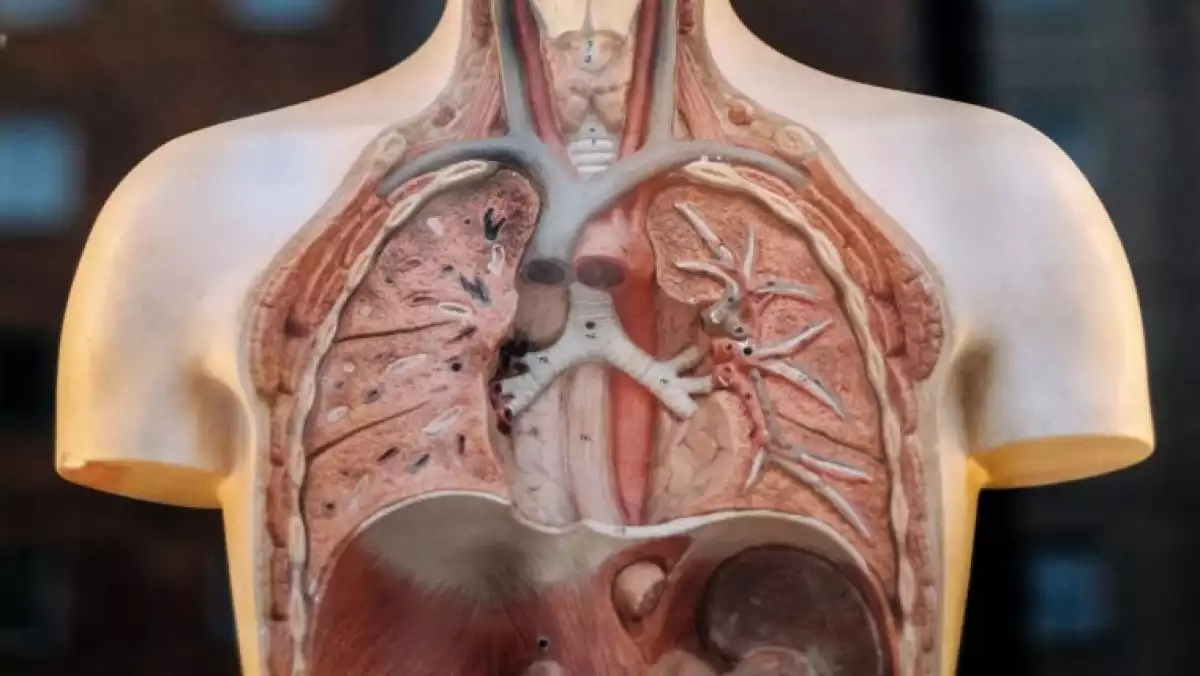
The human body and the cells that make it up need oxygen to survive. This oxygen that we get from the outside allows our organs and systems to function correctly, so a decrease in oxygen intake, or absolute deprivation of oxygen, can be fatal.
As happens with other metabolic processes, in our body there is a whole network of organs and systems that enable this function: the respiratory system. In this article, we will describe what the respiratory system is, its parts and functions and what diseases are related to it.
Respiratory system definition
The respiratory system is a structure of specialized organs and tissues that are present in all animals. This structure allows the exchange of gases and makes breathing possible.
If we focus on humans, this structure receives oxygen and expels carbon dioxide. The lungs are the main organs that are in charge of the exchange of gases as the person breathes. However, it is also composed of a large number of organs such as the nose, pharynx, trachea or bronchi, among many others, that we will mention later.
In the process of breathing, the red blood cells get the oxygen from the lungs, and they take it to the rest of the body. Then, they get the carbon dioxide, and they carry it to the lungs, from where they come out of our body when we exhale.
As in all living creatures, we need oxygen to live. When our body experiences a decrease in oxygen intake (hypoxia) or an absolute deprivation of oxygen (anoxia), brain cells begin to die, and this can lead to severe brain damage and ultimately, death.
So we can provide our organism with enough oxygen to survive, the respiratory system carries out inspirations and exhalations based on a respiratory rate that usually varies according to the age, the physical state of the person and the situation they face at the time of breathing.
The breathing rate for babies is around 40 breaths per minute, which can reduce to 20 while sleeping. In the case of adults, at rest, it is between 12 and 16 breaths per minute. These numbers can vary if the person is doing some physical exercise or if they are under high levels of stress or anxiety, which can increase up to 45 breaths per minute.

Parts and functions
As mentioned in the previous section, the respiratory system consists of a whole structure of organs that make the intake of oxygen possible, its distribution around the entire body and the expulsion of carbon dioxide. In the following lines, we are going to describe some of the most important parts of this system.
1. Nose and nasal cavity
Both the nose and the nasal cavity are the main entrance for air, and they are the first section the respiratory tract connects to and through which the air moves.
The nose is a facial structure made mainly of cartilage, while the nasal cavity refers to the hollow space that is inside it and which is covered by capillaries and mucous membranes.
The function of the nasal cavity is to warm up, moisten and filter the air that we breathe before it gets to our lungs. The capillaries and the mucous membranes trap dust, contaminants and other potentially harmful elements before they get to more internal parts of our body.
As well as being an airway, the nose is also from where the carbon dioxide is expelled during exhalation.
2. Mouth
The mouth, or oral cavity, is the second external opening of the respiratory tract, which makes the inlet and outlet of gases possible. Although most of the breathing is carried out through the nose, the oral cavity is used to complement or replace the function of the nasal cavity when necessary. Or because it is obstructed or because the person needs more oxygen than the one the nose can provide them.
Although the mouth can get more air than the nose, this air has not been filtered before entering the body. The reason is that, unlike the nose, there are no capillaries or mucous membranes in the mouth that filter the air and clean it before it reaches the lungs.
3. Pharynx
Commonly known as the throat, the pharynx is a kind of funnel formed by muscle that goes from the posterior end of the nasal cavity to the upper end of the esophagus and larynx. Both the air from the oral cavity and the one from the nasal cavity go into our body through the pharynx.
This organ is shared with the digestive system; this means the food also goes through the pharynx, so there is a mechanism that does not allow the food to get into the respiratory system and avoid choking.
This is possible thanks to the epiglottis. This small portion of cartilage works as a switch between the trachea and the esophagus. When we swallow, we stop breathing for a moment because the epiglottis covers the trachea and ensures that food enters the esophagus.
4. Larynx
The larynx is the shortest section of the respiratory tract, which is the previous portion of the neck, just below the thyroid and above the pharynx and the trachea. Apart from being a part of the inlet and outlet of air, the larynx has particular structures known as vocal folds or vocal cords.
The vocal cords are folds in the mucous membrane that vibrate to produce vocal sounds and to talk. This is the reason why the larynx is also known as the voice box.
5. Trachea
This tube-shaped organ made of cartilage rings provides a way for air to get in and out of the lungs. Specifically, the trachea connects the larynx with the bronchi and allows the air to go all the way through the neck to the thorax.
The trachea is covered by a membrane called epithelium, which produces a mucous substance that traps the dust and other contaminants, so they do not get to the lungs.
6. Bronchi and bronchioles
The structures that follow the trachea are the bronchi and the bronchioles. In the inferior end of the trachea, the respiratory tract is divided into branches to the left and to the right, known as primary bronchi. Both bronchi enter each of the lungs, and they branch out creating the secondary bronchi.
This ramification continues throughout the lungs, forming the third bronchi and the bronchioles. The function of all this structure is to take the air from the trachea to the lungs. Like the trachea, the bronchi and bronchioles also have membranes that filter and purify the air.
7. Lungs
Last but not least, the lungs are two big and spongy organs located in the thorax. Each of them are covered in a pleural membrane that provides them space for them to expand and get bigger when the air comes in.
The inside of the lungs is formed by spongy tissues that contain a lot of capillaries and a great number of tiny sacs called alveoli. The alveoli are small structures that are located at the end of the bronchioles and allow the air to come in them with the purpose of exchanging gases with the blood.

Respiratory system diseases
Like any other system, the respiratory one is also susceptible to disease. The illnesses of this system can be caused by a virus, bacteria, or be chronical diseases such as asthma.
Although there are a lot of different diseases that can affect its functioning, the most common ones are asthma, chronic obstructive pulmonary disease (COPD) and lung cancer.
Asthma
Asthma is a clinical condition caused by chronic inflammation of the respiratory tract in the lungs. The main symptoms are a heavy cough, tightness in the chest and not being able to breathe well.
This illness tends to get worse when the person is exposed to polluting agents such as smoke, steam, chemical products or because of respiratory infections.
Chronic obstructive pulmonary disease (COPD)
The chronic obstructive pulmonary disease is a degenerative disease that makes breathing more and more difficult. COPD is an intersection of three lung conditions: chronic asthma, bronchitis, and emphysema.
Lung cancer
Lung cancer is one of the most common cancers around the world. Although there are different types of lung cancers, each of them with an own way of development, they are all characterized by an increase of cancerous cells in the respiratory tract, specifically in the lungs.
References
Hsia, C. C., Hyde, D. M. & Weibel, E. R. (2016). Lung Structure and the Intrinsic Challenges of Gas Exchange. Comprehensive Physiology, 6(2): 827–895.
